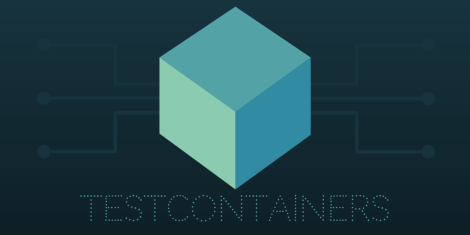Testing using TestContainers
Part of our everyday ci/cd tasks involve using containers in order for the tests to take effect.
So what if you could control the containers you use through your tests and serve your scenarios better.
Also what if you could do this in a more managed way?
Testcontainers is a Java library that supports JUnit tests, providing lightweight, throwaway instances of common databases, Selenium web browsers, or anything else that can run in a Docker container.
You pretty much can guess what is all about. Our tests can spin up the containers with the parameters needed. We will get started by using it in our tests with Junit.
It all starts with the right dependencies. Supposing we use maven for this tutorial.
<properties>
<junit-jupiter.version>5.4.2</junit-jupiter.version>
<testcontainers.version>1.15.0</testcontainers.version>
</properties>
<dependencies>
<dependency>
<groupId>org.testcontainers</groupId>
<artifactId>testcontainers</artifactId>
<version>${testcontainers.version}</version>
<scope>test</scope>
</dependency>
<dependency>
<groupId>org.testcontainers</groupId>
<artifactId>junit-jupiter</artifactId>
<version>${testcontainers.version}</version>
<scope>test</scope>
</dependency>
</dependencies>I shall use an example we already have with Hoverfly.
We can use Hoverfly on our tests either by running it using Java or having a Hoverfly container with the test cases preloaded.
On the previous blog Hoverfly was integrated in our tests through the Java binary.
For this blog we shall use the Hoverfly container.
Our end result will look like this.
package com.gkatzioura.hoverfly.docker;
import java.net.URI;
import java.net.http.HttpClient;
import java.net.http.HttpRequest;
import java.net.http.HttpResponse;
import org.junit.jupiter.api.Assertions;
import org.junit.jupiter.api.Test;
import org.testcontainers.containers.BindMode;
import org.testcontainers.containers.GenericContainer;
import org.testcontainers.junit.jupiter.Container;
import org.testcontainers.junit.jupiter.Testcontainers;
@Testcontainers
public class ContainerBasedSimulation {
private static final String SIMULATION_HOST_PATH = ContainerBasedSimulation.class.getClassLoader().getResource("simulation.json").getPath();
@Container
public static GenericContainer gcs = new GenericContainer("spectolabs/hoverfly")
.withExposedPorts(8888)
.withExposedPorts(8500)
.withCommand("-webserver","-import","/var/hoverfly/simulation.json")
.withClasspathResourceMapping("simulation.json","/var/hoverfly/simulation.json" ,BindMode.READ_ONLY);
@Test
void testHttpGet() {
var hoverFlyHost = gcs.getHost();
var hoverFlyPort = gcs.getMappedPort(8500);
var client = HttpClient.newHttpClient();
var request = HttpRequest.newBuilder()
.uri(URI.create("http://"+hoverFlyHost+":"+ hoverFlyPort +"/user"))
.build();
var res = client.sendAsync(request, HttpResponse.BodyHandlers.ofString())
.thenApply(HttpResponse::body)
.join();
Assertions.assertEquals("{\"username\":\"test-user\"}",res);
}
}Let’s break it down.
The @Testcontainers annotation is needed for the Jupiter integration.
@Testcontainers
public class ContainerBasedSimulation {
}We shall use a container image that is not preloaded among the test containers available (for example Elastic Search), thus we shall use the GenericContainer class.
@Container
public static GenericContainer gcs = new GenericContainer("spectolabs/hoverfly")Since we want to load to the container a simulation, we need to set the path to our simulation from our host machine. By using withClasspathResourceMapping we directly specify files in our classpath, for example the test resources.
.withClasspathResourceMapping("simulation.json","/var/hoverfly/simulation.json",BindMode.READ_ONLY);Hoverfly needs the simulation and the admin port to be exposed so we shall instruct Testcontainers to expose those ports and map them to host.
new GenericContainer("spectolabs/hoverfly")
.withExposedPorts(8888)
.withExposedPorts(8500)We need to have a simulation placed on the container. By using withFileSystemBind we specify the local path and the path on the container.
... .withFileSystemBind(SIMULATION_HOST_PATH,"/var/hoverfly/simulation.json" ,BindMode.READ_ONLY) ...
Also docker images might need to have some extra commands, therefore we shall use .withCommand, to pass the commands needed.
...
.withCommand("-webserver","-import","/var/hoverfly/simulation.json")
...Technically we can say we are ready to go and connect to the container, however when running test containers the container is not accessible through the port specified to do the binding. After all, if tests run on parallel there is going to be a collision. So what Testcontainers do is to map the exposed port of the container to a random local port.
This way port collisions are avoided.
@Test
void testHttpGet() {
var hoverFlyHost = gcs.getHost();
var hoverFlyPort = gcs.getMappedPort(8500);
var client = HttpClient.newHttpClient();
var request = HttpRequest.newBuilder()
.uri(URI.create("http://"+hoverFlyHost+":"+ hoverFlyPort +"/user"))
.build();
var res = client.sendAsync(request, HttpResponse.BodyHandlers.ofString())
.thenApply(HttpResponse::body)
.join();
Assertions.assertEquals("{\"username\":\"test-user\"}",res);
}Using GenericContainer.getMappedPort(8500) we can get the port we have to use to interact with the container. Also getHost() is essential too since it won’t always direct to localhost.
Last but not least while testing if your are curious enough and do a docker ps.
docker ps >04a322447226 testcontainers/ryuk:0.3.0 "/app" 3 seconds ago Up 2 seconds 0.0.0.0:32814->8080/tcp testcontainers-ryuk-fb60c3c6-5f31-4f4e-9ab7-ce25a00eeccc
You shall see a container running which is not the one we instructed through our unit test. The ryuk container is responsible for removing containers/networks/volumes/images by given filter after specified delay.
That’s it! We just achieved running the container we needed through our a test and we successfully migrated a previous test to one using test containers.
Published on Java Code Geeks with permission by Emmanouil Gkatziouras, partner at our JCG program. See the original article here: Testing using TestContainers Opinions expressed by Java Code Geeks contributors are their own. |






